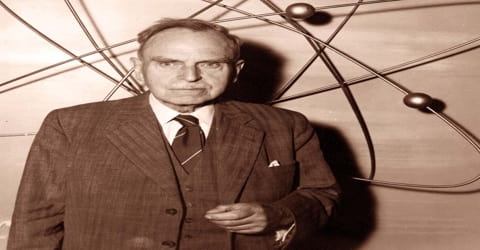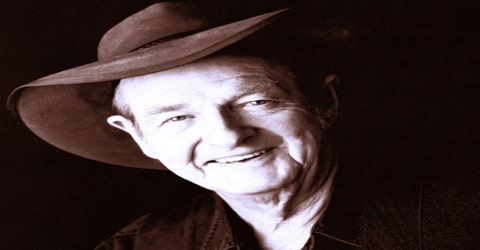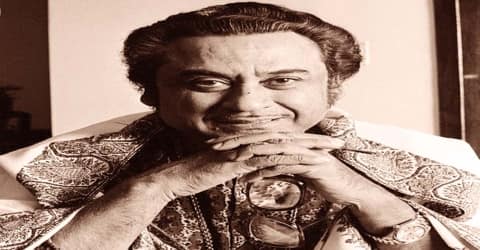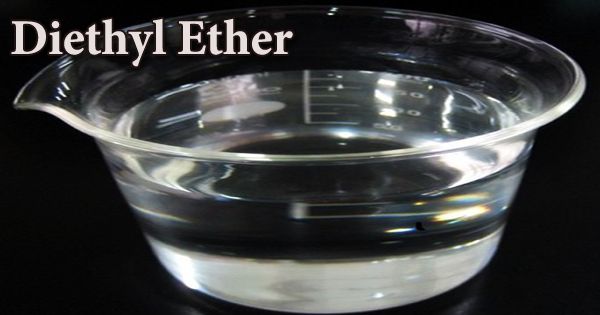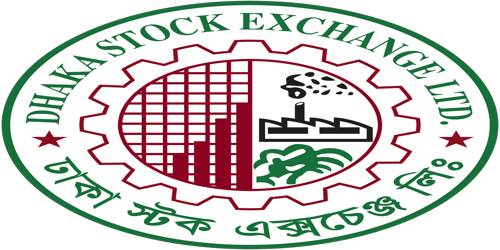Biography of Otto Hahn
Otto Hahn – German chemist and researcher.
Name: Otto Hahn
Date of Birth: 8 March 1879
Place of Birth: Frankfurt am Main, Hesse-Nassau, Prussia, Germany
Date of Death: 28 July 1968 (aged 89)
Place of Death: Göttingen, West Germany
Spouse: Edith Junghans (b.1887 – d.1968) (Married: 1913–1968)
Children: Hanno Hahn
Fields: Radiochemistry, Nuclear chemistry
Early Life

Otto Hahn was a German chemist who, with the radiochemist Fritz Strassmann, is credited with the discovery of nuclear fission. Hahn was born in Frankfurt, Germany, on 8 March in 1879 to a rich entrepreneur named Heinrich Hahn. He developed an interest in chemistry at 15, though his father wanted him to study architecture. He studied chemistry and mineralogy and later received his doctorate in organic chemistry from the University of Marburg in 1901, where also worked for two years as an assistant to his doctoral supervisor Theodor Zincke.
He served as the last President of the Kaiser Wilhelm Society (KWG) in 1946 and as the founding President of the Max Planck Society (MPG) from 1948 to 1960. Considered by many to be a model for scholarly excellence and personal integrity, he became one of the most influential and respected citizens of the new postwar country West Germany.
Nuclear fission is widely regarded as the key invention that enabled the atomic bomb, although Hahn was not involved with its development directly. He is considered to be one of the most famous chemists of all time and the “father of nuclear chemistry.” He also was revered by many as a model scientist with an outstanding history of academic achievement, excellent working methods, and a strong record of personal integrity. In his lifetime, he was recognized by many scientists as one of the primary discoverers in chemistry and physics, and specifically, physics accomplished through chemistry.
In his later years, he was a vocal critic of nuclear weapons and sought to have them banned. He was admired by many Germans as a model citizen, especially in the period following World War II, and he was the recipient of many scientific and civilian awards internationally. To know more about his life and works read on.
His long-time scientific collaborator Nikolaus Riehl claimed that the family had “a Jewish antecedent”, but this didn’t hinder Hahn’s academic career during the Nazi era.[8] According to journalist Bernt Engelmann, Hahn was often thought of as Jewish because of his “Jewish sounding” surname, but he instead asserts that Hahn only had Jewish ancestors on his maternal side of the family despite “Giese” (his mother’s maiden name) not being a traditional Jewish surname. Engelmann claimed that this Jewish ancestry was an “anxiously guarded secret” which had been “hushed up because German science could not afford the loss of this scientist of the highest international repute.” However, one of Lise Meitner’s principal biographers was skeptical of this claim of Jewish maternal ancestry, noting that Engelmann made numerous factual errors in his book. She speculates that it may have been a malicious rumor, similar to the one that affected Max Planck, who was falsely accused by his enemies in the Reich of having Jewish ancestors on his maternal side.
He was awarded the Nobel Prize for Chemistry in 1944 and shared the Enrico Fermi Award in 1966 with Strassmann and Lise Meitner.
Childhood, Family and Educational Life

Otto Hahn was born March 8, 1879, Frankfurt am Main, Germany. Hahn was the youngest son of Heinrich Hahn, a glazier and businessman, and Charlotte Giese. Together with his brothers Karl, Heiner, and Julius, Otto was raised in a sheltered environment. At the age of 15, he began to take a special interest in chemistry and carried out simple experiments in the laundry room of the family home. His father wanted Otto to study architecture, as he had built or acquired several residential and business properties, but Otto persuaded him that his ambition was to become an industrial chemist.
Starting in 1897, he studied at the ‘University of Marburg’, where he received a doctorate, working in chemistry and mineralogy. He also studied at the ‘University of Munich’ under Adolf von Baeyer.
In 1901, Hahn received his doctorate in Marburg for a dissertation entitled On Bromine Derivates of Isoeugenol, a topic in classical organic chemistry. After completing his one-year military service, the young chemist returned to the University of Marburg, where for two years he worked as an assistant to his doctoral supervisor, Geheimrat Professor Theodor Zincke.
Personal Life
In 1913, he married Edith Junghans, an art student at the Royal Academy of Art in Berlin. Nine years later, he and his wife had their only child, Hanno.
Career and Works
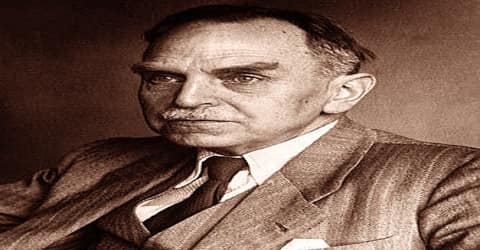
Hahn accepted a job at the University College of London in 1904 (working under Sir William Ramsay, known for having discovered the inert gases), where the famous discovery of radiothorium, a new radioactive substance, took place. He continued his pioneering research in nuclear chemistry at McGill University in Montreal, where he discovered radioactinium, a radioactive isotope of thorium. (In fact, it was a still undiscovered isotope of the known element thorium. The term isotope was only coined in 1913, by the British chemist Frederick Soddy).
At the session of the Royal Society on the 16 March, 1905 Ramsay communicated Hahn’s discovery of radiothorium, and even the press was interested. The Daily Telegraph informed its readers:
A NEW ELEMENT – Very soon the scientific papers will be agog with a new discovery which has been added to the many brilliant triumphs of Gower Street. Dr. Otto Hahn, who is working at University College, has discovered a new radioactive element, extracted from a mineral from Ceylon, named Thorianite, and possibly, it is conjectured, the substance which renders thorium radioactive. Its activity is at least 250,000 times as great as that of thorium, weight for weight. It gives off a gas (generally called an emanation), identical with the radioactive emanation from thorium. Another theory of deep interest is that it is the possible source of a radioactive element possibly stronger in radioactivity than radium itself, and capable of producing all the curious effects which are known of radium up to the present. – The discoverer read a paper on the subject to the Royal Society last week, and this should rank, when published, among the most original of recent contributions to scientific literature.
Two years later, he went back to Germany to work at the ‘University of Berlin’ with Emil Fischer, who gave Hahn his own laboratory, where he discovered substances including radium-228 (mesothorium I) and thorium-230 (ionium).
He started teaching at the ‘University of Berlin’ in 1907 and met Lise Meitner, a physicist from Austria, with whom he would collaborate throughout his career.
In 1914, for the discovery of mesothorium I (radium-228), Otto Hahn was first nominated for the Nobel Prize in Chemistry by Adolf von Baeyer and, in June 1907, by means of the traditional habilitation thesis, Hahn qualified to teach at the University of Berlin. On 28 September 1907, he made the acquaintance of the Austrian physicist Lise Meitner who was almost the same age, who had transferred from Vienna to Berlin. So began the thirty-year collaboration and lifelong close friendship between the two scientists.
He then worked on explaining the phenomenon of radioactive recoil discovered by Canadian physicist Harriet Brooks. In 1924, he was elected to full membership in the ‘Prussian Academy of Sciences’ after his name was nominated by Albert Einstein, Max Planck, Fritz Haber, Wilhelm Schlenk, and Max von Laue. Later that decade, and for nearly twenty years afterward, he was the director of the prestigious ‘Kaiser Wilhelm Institute’.
In 1934 Hahn became keenly interested in the work of the Italian physicist Enrico Fermi, who found that when the heaviest natural element, uranium, is bombarded by neutrons, several radioactive products are formed. Fermi supposed these products to be artificial elements similar to uranium. Hahn and Meitner, assisted by the young Strassmann, obtained results that at first seemed in accord with Fermi’s interpretation but that became increasingly difficult to understand.
In 1910, Hahn was appointed professor by the Prussian Minister of Culture and Education August von Trott zu Solz and, in 1912, he became head of the Radioactivity Department of the newly founded Kaiser Wilhelm Institute for Chemistry in Berlin-Dahlem (today ‘Hahn-Meitner-Building’ of the Free University, Berlin, Thielallee 63). Succeeding Alfred Stock, Hahn was director of the institute from 1928 to 1946.
On December 16 and 17 of 1938, Hahn and his assistant Fritz Strassmann conducted experiments which created nuclear fission. The phenomenon was later explained by Lise Meitner and Otto Frisch.
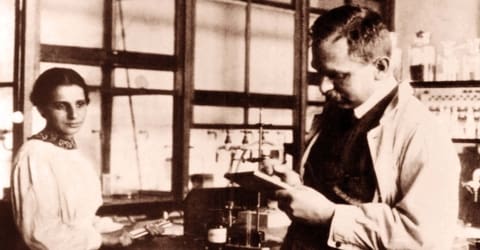
(Hahn, Meitner and the discovery of nuclear fission)
The tremendous implications of this discovery were realized by scientists before the outbreak of World War II, and a group was formed in Germany to study possible military developments. Much to Hahn’s relief, he was allowed to continue with his own researches. After the war, he and other German nuclear scientists were taken to England, where he learned that he had been awarded the Nobel Prize for 1944 and was profoundly affected by the announcement of the explosion of the atomic bomb at Hiroshima in 1945. Although now aged 66, he was still a vigorous man; a lifelong mountaineer, he maintained physical fitness during the enforced stay in England by a daily run.
In December 1916, when posted to Berlin, Hahn was able to resume radiochemical research in his institute. In 1917–1918, Hahn and Meitner isolated a long-lived activity, which they named “proto-actinium”. Already in 1913, Kazimierz Fajans and Göhring had isolated a short-lived activity from uranium X2 (later known as 234mPa), and called the substance “brevium”. The two activities were different isotopes of the same undiscovered element number 91.
For their discovery, Hahn and Meitner were repeatedly nominated for the Nobel Prize in Chemistry in the 1920s by a number of scientists, among them Max Bergmann, Viktor Moritz Goldschmidt, and even Fajans himself. In 1949, the International Union of Pure and Applied Chemistry (IUPAC) named the new element definitely protactinium and confirmed Hahn and Meitner as discoverers.
After the war, Hahn became a vocal spokesperson for social responsibility, saying that his discoveries should not be put to military use. In 1958, he and Albert Schweizer signed the Pauling Appeal to the United Nations, which called for the ‘immediate conclusion of an international agreement to stop the testing of nuclear weapons.’
In 1966, Glenn T. Seaborg, co-discoverer of many transuranium elements and President of the United States Atomic Energy Commission, wrote about this book as follows:
As a young graduate student at the University of California at Berkeley in the mid-1930s and in connection with our work with plutonium a few years later, I used his book Applied Radiochemistry as my bible. This book was based on a series of lectures which Professor Hahn had given at Cornell in 1933; it set forth the “laws” for the co-precipitation of minute quantities of radioactive materials when insoluble substances were precipitated from aqueous solutions. I recall reading and rereading every word in these laws of co-precipitation many times, attempting to derive every possible bit of guidance for our work, and perhaps in my zealousness reading into them more than the master himself had intended. I doubt that I have read sections in any other book more carefully or more frequently than those in Hahn’s Applied Radiochemistry. In fact, I read the entire volume repeatedly and I recall that my chief disappointment with it was its length. It was too short.
And Seaborg added:
It has been given to very few men to make contributions to science and to humanity of the magnitude of those made by Otto Hahn. He has made those contributions over a span of nearly two generations, beginning with a key role in the earliest days of radiochemistry in investigating and unraveling the complexities of the natural radioactivities and culminating with his tremendous discovery of the nuclear fission of uranium. I believe that it is fair to refer to Otto Hahn as the father of radiochemistry and of its more recent offspring nuclear chemistry. For his special genius, the world of science will be forever grateful.
On his return to Germany he was elected president of the former Kaiser Wilhelm Society (KWG) (renamed the Max Planck Society for the Advancement of Science) and became a respected public figure, a spokesman for science, and a friend of Theodor Heuss, the first president of the Federal Republic of Germany. He was the last president of the institution. He campaigned against further development and testing of nuclear weapons. Honors came to him from all sides; in 1966 he, Meitner, and Strassmann shared the prestigious Enrico Fermi Award. This period of his life was saddened, however, by the loss of his only son, Hanno, and his daughter-in-law, who was killed in an automobile accident in 1960.
Awards and Honor
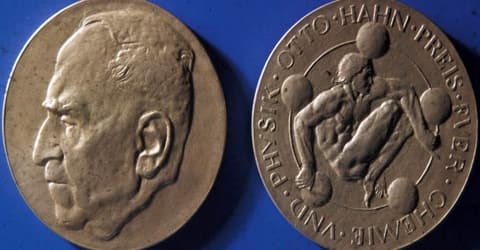
(The medal of the Otto Hahn Prize for Chemistry and Physics)
On 15 November 1945, the Royal Swedish Academy of Sciences announced that Hahn had been awarded the 1944 Nobel Prize in Chemistry “for his discovery of the fission of heavy atomic nuclei.” In total, he was nominated for the Nobel Prize in Chemistry 22 times and for the Nobel Prize in Physics 16 times.
In 1957, he received the title of the Honorary Officer of the ‘Order of the British Empire’ from the United Kingdom and the ‘Gold Cross of the Order Pro Ecclesia et Pontifice’ from the Holy See.
Two years later, he received the Officer of the ‘Ordre National de la Légion d’Honneur’ from France and the ‘Grand Cross First Class of the Order of Merit’ from West Germany, in 1959.
In 1966, he received the ‘Enrico Fermi Award’ in the U.S.A. The honor was presented by Lyndon Johnson, President of the United States.
Death and Legacy
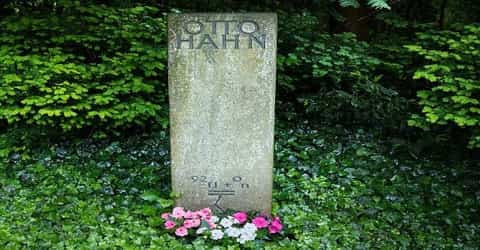
Otto Hahn died on 28 July 1968. The day after his death, the Max Planck Society published the following obituary notice in all the major newspapers in Germany, Austria, and Switzerland:
On 28 July, in his 90th year, our Honorary President Otto Hahn passed away. His name will be recorded in the history of humanity as the founder of the atomic age. In him, Germany and the world have lost a scholar who was distinguished in equal measure by his integrity and personal humility. The Max Planck Society mourns its founder, who continued the tasks and traditions of the Kaiser Wilhelm Society after the war and mourns also a good and much-loved human being, who will live in the memories of all who had the chance to meet him. His work will continue. We remember him with deep gratitude and admiration.
A number of cities and districts in Germany, Austria, and Switzerland have named secondary schools after him, and squares, streets, and bridges throughout Europe also have been named after him. More than twenty countries worldwide have issued coins, medals, or stamps bearing his portrait.
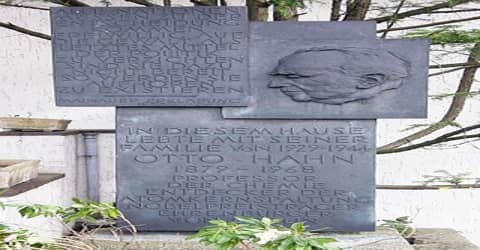
(Monument in Berlin-Dahlem, in front of the Otto-Hahn-Platz)
Hahn’s death did not stop his public acclamation. Proposals were made at different times, first in 1971 by American chemists, that the newly synthesized element no. 105 should be named hahnium in Hahn’s honor; in 1997 the IUPAC (International Union of Pure and Applied Chemistry) named it dubnium, after the Russian research center in Dubna. Although element 108 was given the name hassium (after Hesse) by its officially recognized German discoverers in 1992, a 1994 IUPAC committee recommended that it be named hahnium (Hn), in spite of the long-standing convention to give the discoverer the right to suggest a name. This recommendation was not adopted, following protests from the German discoverers, and the name hassium (Hs) was adopted internationally in 1997.
In 1999, he was elected the third most important scientist of the 20th century in a survey of 500 engineers, natural scientists, and physicians by Focus, a German news magazine. The first two were Albert Einstein and Max Planck.
Information Source:
